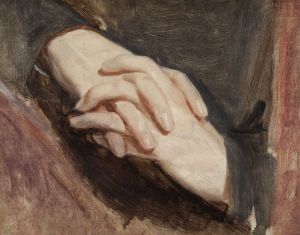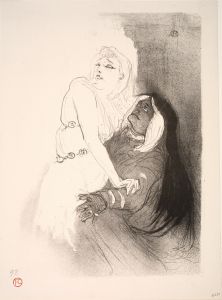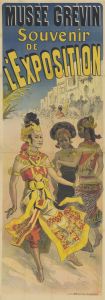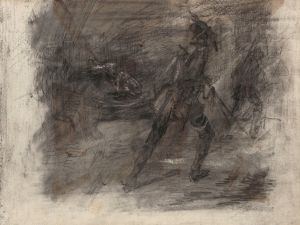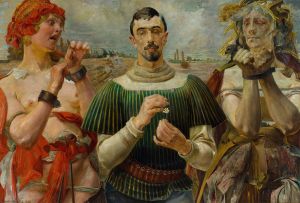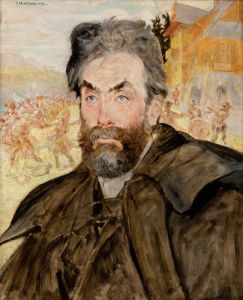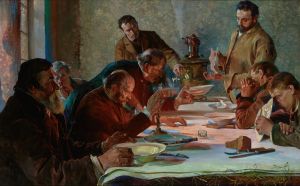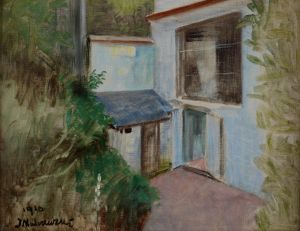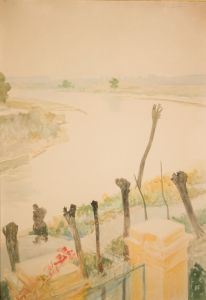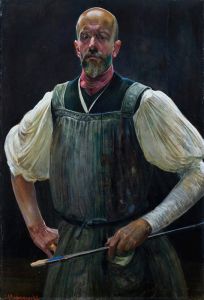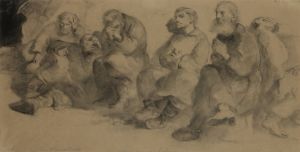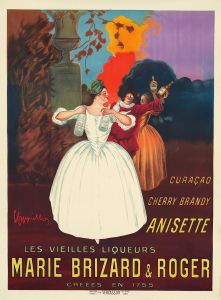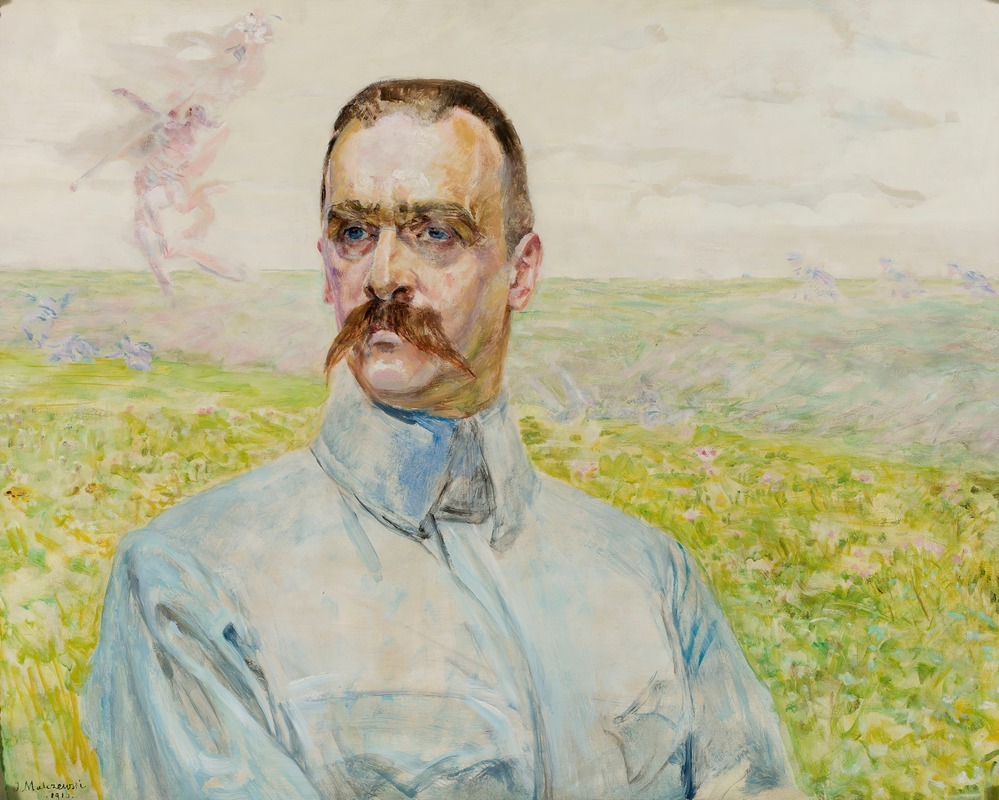
Portrait of brigadier Józef Piłsudski
A hand-painted replica of Jacek Malczewski’s masterpiece Portrait of brigadier Józef Piłsudski, meticulously crafted by professional artists to capture the true essence of the original. Each piece is created with museum-quality canvas and rare mineral pigments, carefully painted by experienced artists with delicate brushstrokes and rich, layered colors to perfectly recreate the texture of the original artwork. Unlike machine-printed reproductions, this hand-painted version brings the painting to life, infused with the artist’s emotions and skill in every stroke. Whether for personal collection or home decoration, it instantly elevates the artistic atmosphere of any space.
"Portrait of Brigadier Józef Piłsudski" is a significant work by the renowned Polish painter Jacek Malczewski, created in 1916. This portrait captures one of Poland's most influential figures, Józef Piłsudski, who played a pivotal role in the country's struggle for independence in the early 20th century. Malczewski, known for his symbolic and often allegorical style, brings his unique artistic vision to this depiction of Piłsudski, reflecting both the subject's historical importance and the artist's personal interpretation.
Jacek Malczewski (1854-1929) was a leading figure in the Young Poland movement, a period of modernist art and literature in Poland that spanned the late 19th and early 20th centuries. Malczewski's work is characterized by its rich symbolism, vibrant colors, and a deep engagement with Polish national identity and mythology. His paintings often explore themes of patriotism, sacrifice, and the spiritual struggles of the Polish people.
Józef Piłsudski (1867-1935) was a military leader and statesman who became a central figure in Poland's fight for independence from the partitions imposed by Russia, Prussia, and Austria. By the time Malczewski painted his portrait, Piłsudski had already established himself as a leader of the Polish Legions, which fought alongside the Austro-Hungarian army during World War I in hopes of securing Polish sovereignty. His efforts eventually led to the re-establishment of Poland as an independent nation in 1918, following over a century of foreign domination.
In the portrait, Malczewski presents Piłsudski in his military uniform, emphasizing his role as a brigadier and leader of the Polish Legions. The artist's use of color and light highlights Piłsudski's determined expression and commanding presence, capturing the essence of a man deeply committed to his country's cause. The background and composition of the painting may include symbolic elements typical of Malczewski's style, though specific details of these elements are not universally documented.
Malczewski's portrait of Piłsudski is not only a representation of a historical figure but also an artistic statement on the broader themes of national identity and the struggle for freedom. The painting reflects the spirit of the times, as Poland was on the brink of regaining its independence, and serves as a testament to Piłsudski's enduring legacy in Polish history.
The portrait is part of a broader body of work by Malczewski that explores Polish history and identity through the lens of individual figures and allegorical scenes. His paintings often incorporate elements of Polish folklore, mythology, and historical references, creating a rich tapestry of visual storytelling that resonates with the cultural and political climate of his era.
Today, "Portrait of Brigadier Józef Piłsudski" is regarded as an important cultural artifact, reflecting both the artistic prowess of Jacek Malczewski and the historical significance of Józef Piłsudski. It remains a valuable piece for understanding the intersection of art and politics in early 20th-century Poland, as well as the enduring impact of Piłsudski's leadership on the nation's history.





